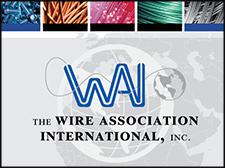How to Build a Proactive Obsolescence Management Plan for Critical Components
.jpg)
All products eventually become obsolete, which can have significant consequences when it affects critical components. Fortunately, proactive strategies can mitigate these risks. How can organizations develop an effective obsolescence management plan or refine their current one?
Schedule Audits to Determine the Extent of the Problem
Thorough audits are necessary to determine what will become obsolete and when. Since this will happen at different times, a timeline is valuable for determining which components to prioritize. Some outdated components may be easier to find alternatives for than others, and team leaders should shape their activities by focusing on what will become obsolete first or reacting based on the resulting potential problems.
An old, irreplaceable component for a rarely used piece of equipment will probably cause fewer problems than something a company relies on for a critical daily process. Similarly, the need for a proactive obsolescence management plan is more urgent if outdated parts could risk lives.
Audit results can show people how quickly they must react to avoid unwanted consequences. In one example, authorities from New Zealand’s KiwiRail proposed budgetary increases after determining it would cost $180 million to keep three ferries operational until 2029. External auditors determined that many aspects of the ferries were in better-than-expected condition and no systemic issues would prevent them from working safely and reliably until the target year.
KiwiRail had previously spent an average of $29 million per ship annually from 2019 through 2024. The new budget would require spending $36 million annually on each asset, and obsolescence was one of the reasons. According to a ferry executive, the obsolete systems remain operationally safe but are more challenging to repair when issues arise because some manufacturers no longer produce components.
Consider the Controllable Factors
Obsolete parts can be frustrating, but proactivity is better than procrastination. Knowledge and awareness are powerful factors people can use to create favorable outcomes.
For example, supplier partnerships can reduce obsolescence’s effects with information that improves planning. Authorized and independent distributors may offer market insights, provide details about low-stock products or suggest alternative sources for hard-to-find items.
Similarly, those tasked with managing obsolescence in their organizations should consider using internal data to determine how often critical equipment requires new parts. That historical information should prevent premature purchases or encourage them to stockpile components in preparation for scarcity.
Additionally, keeping equipment well-maintained may prolong equipment lifespans. Some companies automate maintenance with sensors and algorithms to predict issues before they cause failures. The alternatives are to use preventive maintenance based on manufacturers’ recommendations or waiting for machines to break down.
Though no maintenance plan is universally best for every situation, predictive efforts can align with an obsolescence management strategy because they allow people to detect problems sooner. That prompt response gives them more time to schedule service calls or order parts before critical equipment becomes unusable.
Act Based on the Part or Product in Question
Before creating an obsolescence management plan for an entire product or asset, people should evaluate how their steps might vary depending on each component at risk of becoming obsolete. Sometimes, suitable substitutes are already available for obsolete parts. In other cases, manufacturers can revamp product designs to eliminate dependency on unavailable components.
Some organizations have found ways to create obsolete parts internally, such as by using 3D printers. One automotive manufacturer realized they could source parts up to 75% faster by printing them locally rather than depending on the traditional supply chain. Incorporating this option into an obsolescence management strategy could bring additional benefits, such as allowing people to cut transport-related emissions and stop wasting space on unnecessary inventory storage by printing on-demand parts closer to the machines that rely on them.
The ramifications of obsolescence can be significant when they affect customers who depend on a product for essential functions like hearing. Many Indian children face this challenge after a cochlear implant manufacturer announced required mandatory upgrades to their devices’ processors. Frustrated parents fear this problem will continue because manufacturers don’t guarantee functionality for specific periods.
Though people searching for spare cochlear implant parts have developed an informal trading marketplace, a proactive manufacturer response would prevent customer mistrust and disappointment after learning the devices they rely on will no longer work. A user-centered obsolescence strategy removes these roadblocks. Promising to provide support for at least a brief time could eliminate consumers’ concerns about frequent upgrades. Similarly, a payment plan would make costs more manageable by reducing financial barriers.
Start Developing an Obsolescence Management Strategy Today
Planning for outdated parts or products requires a tailored approach that accounts for how obsolescence would disrupt operations. Proactive decisions allow people to minimize adverse impacts and have more flexibility to pursue multiple options. Creating a strategy may take months and should include input from numerous parties. Luckily, this activity will pay off by giving leaders more freedom regarding how and when they react.
People should also consider creating short-, medium- and long-term plans to handle obsolescence. For example, an immediate response may be to bulk-buy a critical part from a supplier. However, in the medium to long term, it could make more financial sense to examine opportunities to change an asset’s design so that it no longer relies on an obsolete part or adds compatibility with alternative, readily available components.
Featured Product

